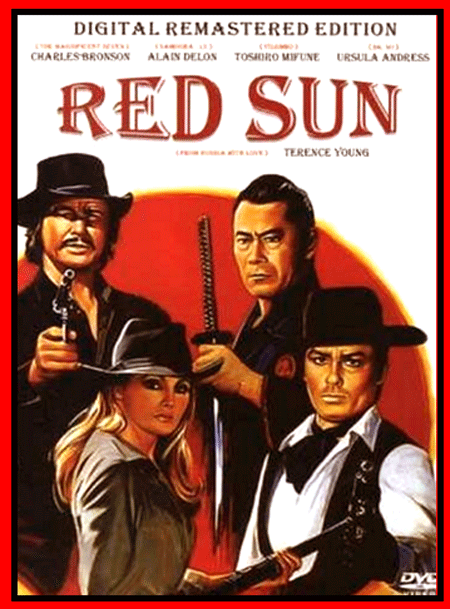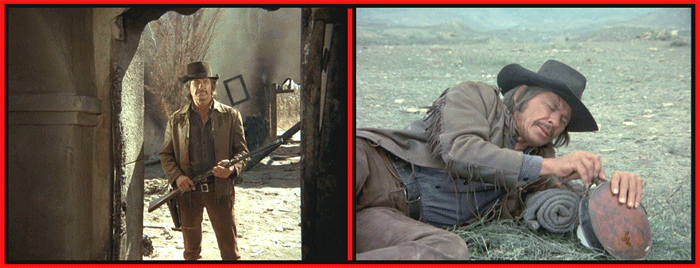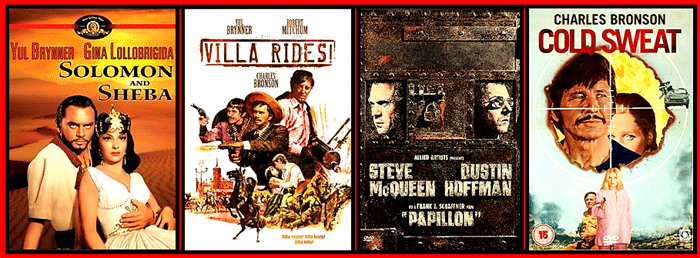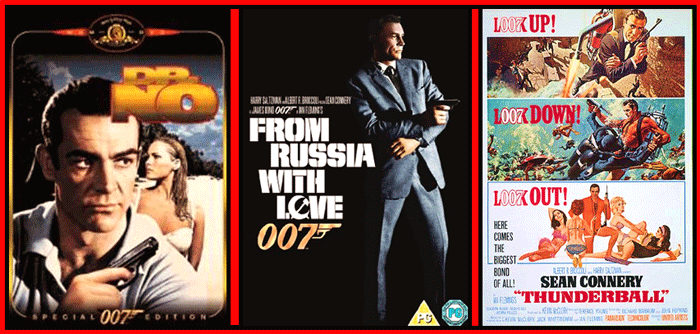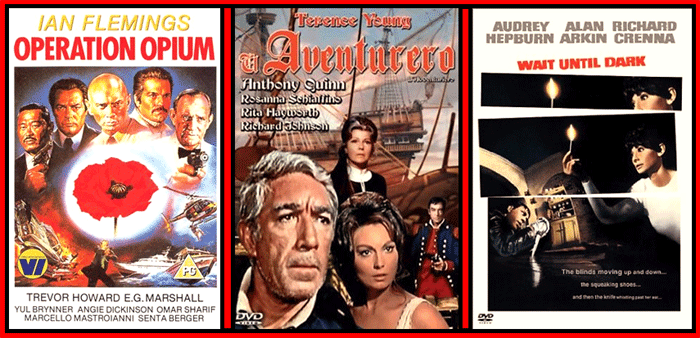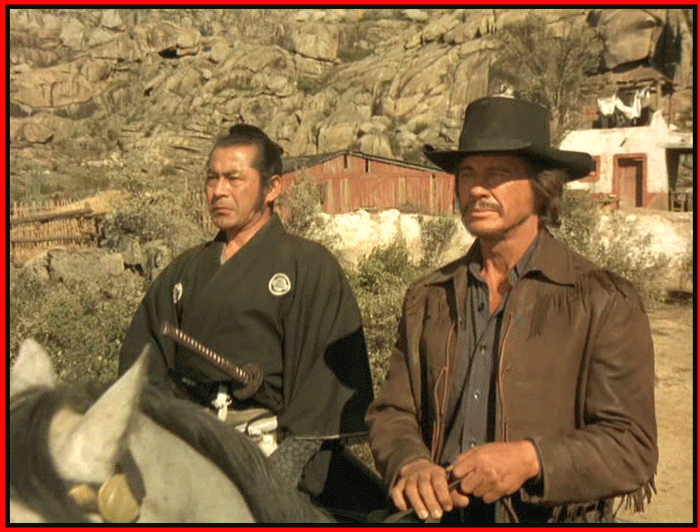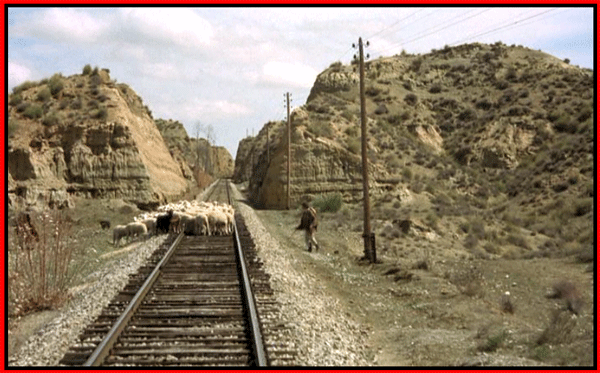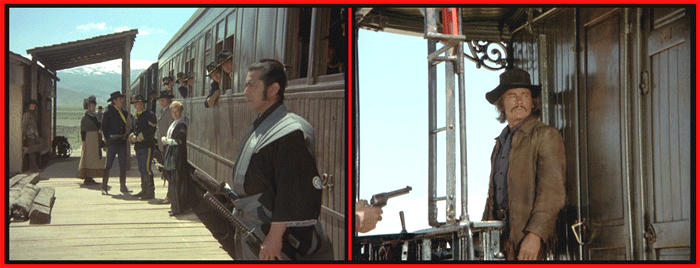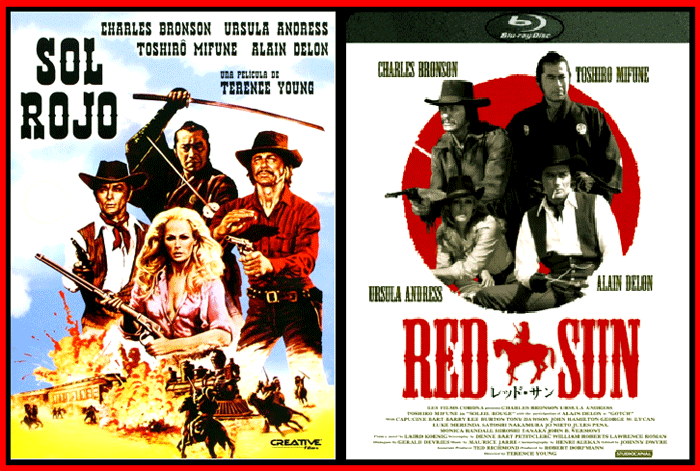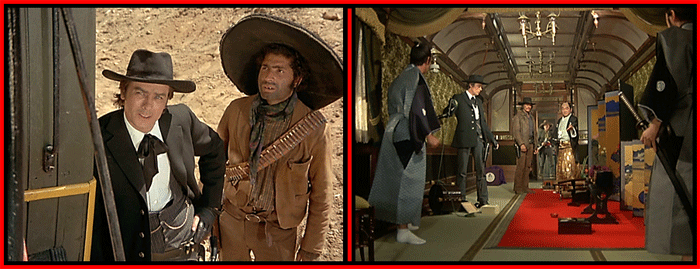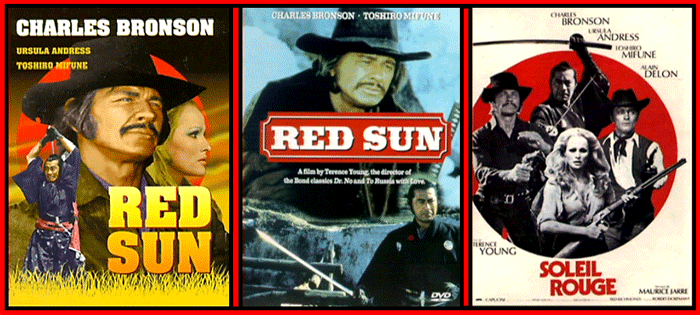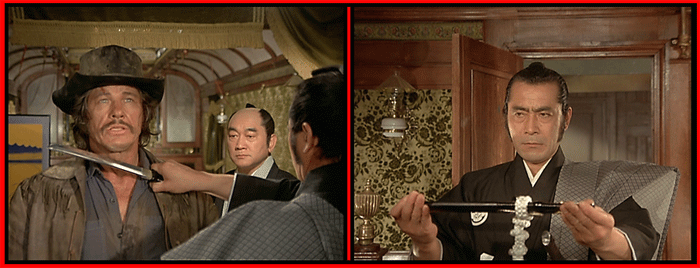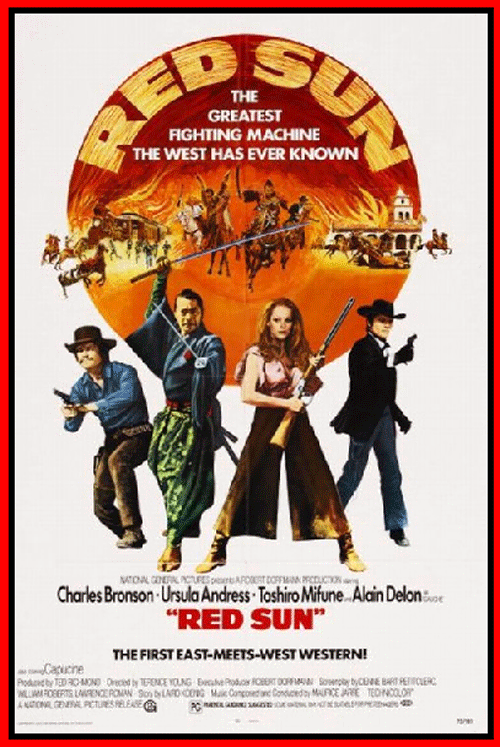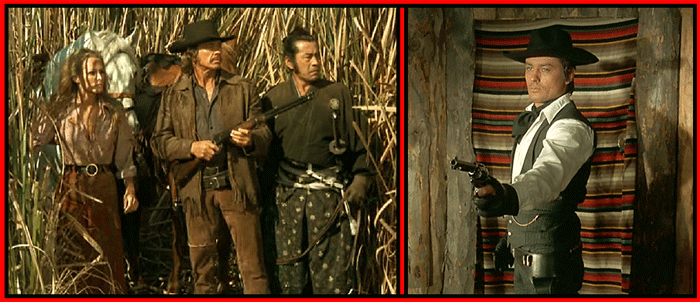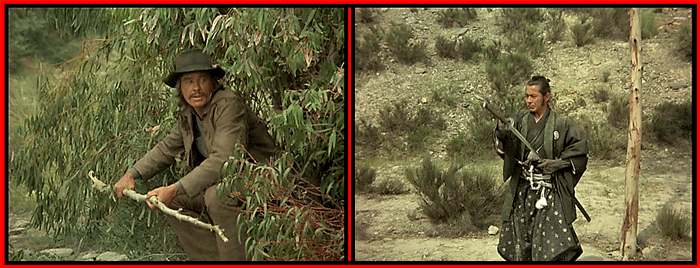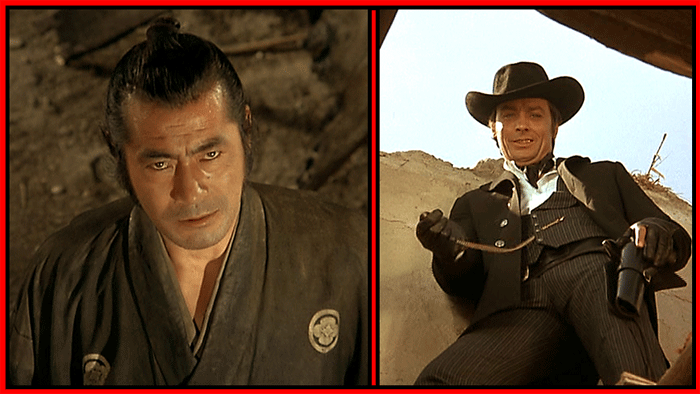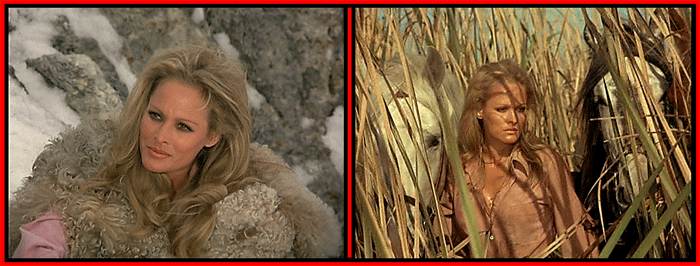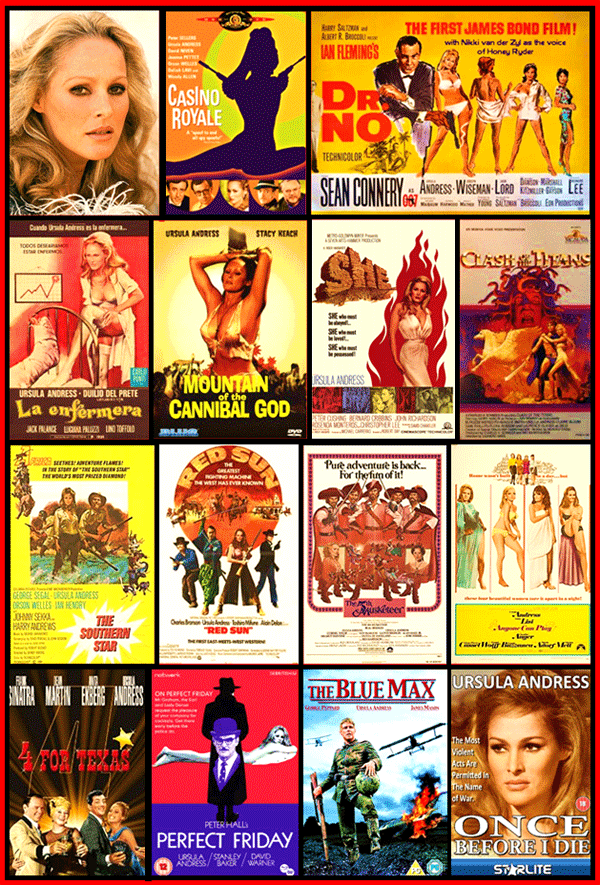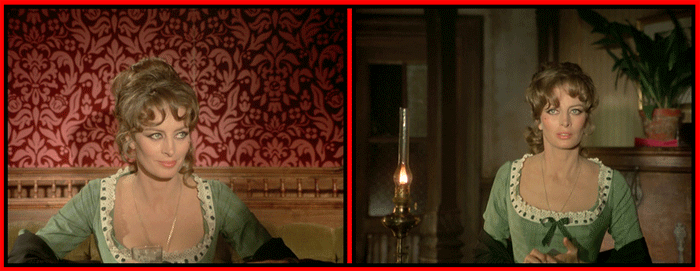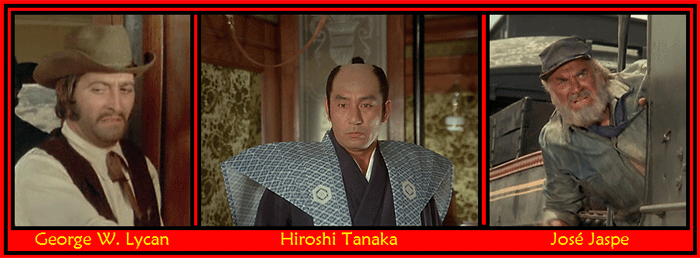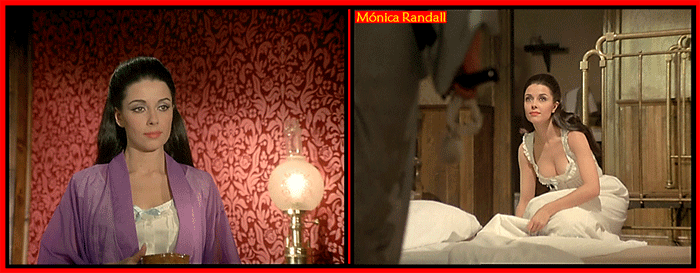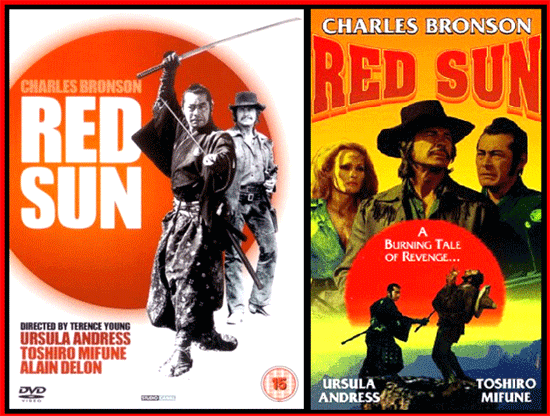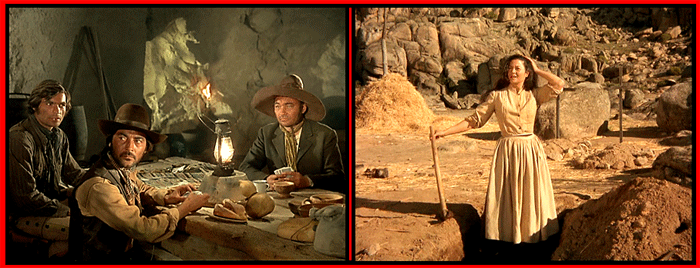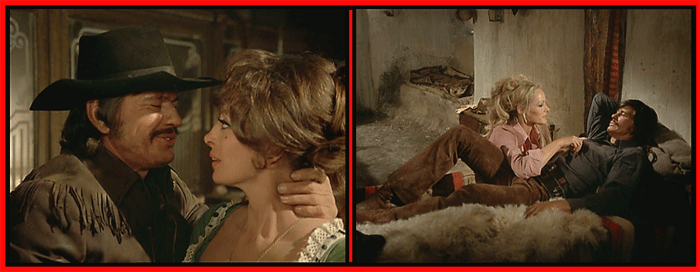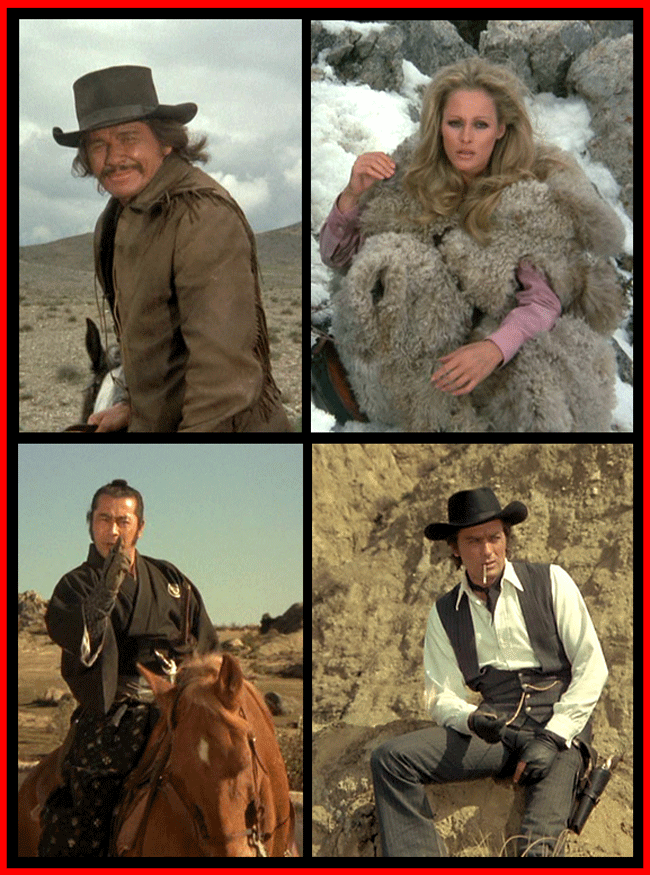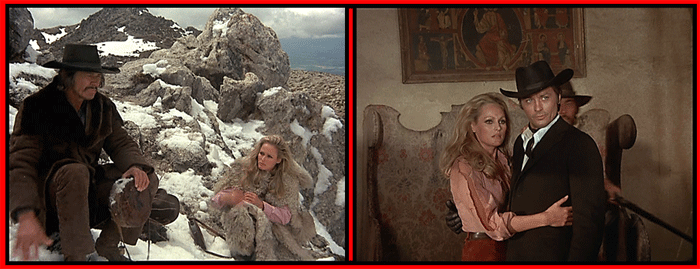This second post concludes my preceding article of March 29, 2016: The Galloping Riders of Almería
By early 1970s, Charles Bronson’s charm had transcended the borders of Europe and invaded far of corners of Asia. Movies such as The Magnificent Seven, The Great Escape, The Dirty Dozen and Once Upon A Time In The West have all contributed their magic for the popularity of Bronson. No sooner, large billboards of the craggy-faced, toughly built Bronson appeared in strategic locations in Japan where he was elevated as the quintessential ‘Western Man.’
His aura of toughness and animal magnetism even earned him an appearance in the Japanese television commercial for Mandom, proclaiming a new toiletry brand for men. The ad-film was created by none other than the Japanese filmmaker Nobuhiko Obayashi, known for his surreal visual style. As for Bronson’s film career, there was no dearth in films for he was already in talks with filmmakers about a project called Red Sun.
According to a book on Charles Bronson, the script for Red Sun was already available – having been passed around the major studios since 1966 when, based on an idea outlined on fifteen-pages, veteran producer Ted Richmond (Solomon and Sheba, Villa Rides!, Papillon) obtained the consent of Toshirô Mifune to star in it.
Owing to unenthusiastic response to get the film off the ground in Hollywood, Richmond associated with producer Robert Dorfmann (Le Cercle Rouge, Cold Sweat, Papillon) in Europe who signed Bronson and Delon. The choice was easier since the two stars had not only starred in their earlier projects, their commercial appeal made it possible to secure financing. The result was a co-production, between Les Films Corona, France; Oceania Produzioni Internazionali Cinematografiche (Oceania Films), Roma/Italy; Producciones Balcázar S.A., Spain, – an arrangement, besides other benefits, assured distribution in three markets.
They also roped in Terence Young to direct the movie. Young has proven his flair in directorial skills through a wide range of genre including peplum and war films since his directorial debut in 1948.
International in scope as the stylish action director of three of the first four James Bond films, Dr No (1962), From Russia With Love (1963), and Thunderball (1965), Young himself was then ranked a colourful character – consistent to the image of the British secret service agent James Bond’s taste for fine wine, expensive clothes and beautiful women.
Ever since his departure from the James Bond series, Young was engaged in direction of The Poppy is Also a Flower (Operation Opium, 1966), L’Avventuriero (The Rover, 1967), Wait Until Dark (1967), Mayerling (1968), and Cold Sweat (1970), the first of three movies that Terence Young would make with Charles Bronson.
Red Sun was shot during the first half of 1971. Chosen as a stand-in for the American Southwest are the atmospheric mountains, virgin grounds, stark terrain and delicious climate of Spanish Almeria’s El Cabo de Gata (Cape Agate), Tabernas and Cortijo de la Sartenilla as well as the area between La Pedriza de Manzanares El Real and La Calahorra, effectively cutting the production cost.
Some of these places, studded with agave plants and other desert succulents, flat-roofed whitewashed houses and abandoned/renovated farmsteads, were familiar to Bronson for having worked there recently in earlier production of Sergio Leone.
Set in the 1870s, Red Sun opens with the arrival of prairie rider Link Stuart (Charles Bronson) at a deserted railway station from where he boards a mail train bound for Washington. Besides the civilian passengers and the US soldiers protecting the gold and other valuables on the train, a delegation led by the Japanese ambassador to the United States occupied a private car.
During the reign of the 121st emperor of Japan, Emperor Kōmei-tennō (July 22, 1831 to January 30, 1867), Japan had begun its transformation into a modern industrial power following the arrival of US Commodore Matthew Calbraith Perry and his “Black Ships” on July 8, 1853 on a mission to force the opening of Japanese ports to American trade, through the use of gunboat diplomacy if necessary. Within the next decade, the drive for modernization resulted in the opening of Japan’s doors to the rest of the world.
Ten years later, as the movie goes, Sakaguchi, Lord of Bizen and the first Japanese ambassador to the United States by authority from the Emperor, had arrived in San Francisco after a long and perilous voyage by sea. Even though his safe arrival to Washington is guaranteed by the US government, anticipating dangers on their way, the entourage rightfully consisted of two samurais to protect their liege lord – one being Kuroda Jubie (Toshirô Mifune) (1) to whom loyalty and death is part of his air and sea and earth.
Once the train had chugged out of the station, its control was forcefully taken over by the bandit group belonging to Link and co-leader Frenchman Gauche (Alain Delon) who soon set to rob the train of its valuables. Having sent off all civilian passengers by foot, Link and Gauche barge into the private car of the Japanese entourage and steal their money while the two samurai stay meek at the ambassador’s instance.
It was after Link had left the car with the money when Gauche’s attention was drawn to a precious Mikado katana, a gold embossed sword, the Japanese was carrying for presenting to the 18th U.S. president, Ulysses S. Grant. Gauche forcefully steals it after killing one of the samurai (Hiroshi Tanaka) who aggressively opposed him. With his mission successfully completed, Gauche double-crosses his partner Link (who was promised 1/3rd of the loot) by throwing dynamite at him. Believing Link to be dead, Gauche and his henchmen ride off with the spoils.
Link was fortunate to survive the attempt on his life and was discovered by Kuroda by the railroad track. Regaining consciousness, Link was compelled by the Japanese ambassador to accompany samurai Kuroda to track down Gauche and retrieve the sword. Kuroda will attain this within seven days maintaining the code of morals and manners of the Bushidō (the way of the warrior) (2) and if he failed, carry out seppuku (belly-cut) or hara-kiri, the Japanese ritual suicide reserved for samurai.
Although Link reluctantly agreed to this he was troubled by the samurai’s intention to kill Gauche in a bloody reprisal as soon as he retrieved the sword. This would not leave Link enough time to catch Gauche alive, and obtain the loot ($400,000/-, give or take a dollar!) from the train robbery. For purpose of expediency, Link must elude Kuroda and go after Gauche alone. The journey that follows is a concoction of action, humour, nudity, betrayal, revenge and restitution of honour.
A French/Italian/Spanish production, the film was a hit in Europe and Asia while in the USA the regular critics were unkind to it which the filmgoers mostly discarded. An uncomplicated action director, Terence Young keeps the movie at a semi-brisk pace sprinkled with humour and brings the story to a dramatic climax amidst the reed thickets, shot in Venta Nueva, Adra, Spain.
Red Sun contains the three situations essential to every western: isolation, violence and law. Kuroda, a man of dignity and honour, but quick and deadly as a rattle snake, is an isolated man in the West in his pursuit to retrieve the stolen sword and protect the honour. He was forced to associate with the outlaw Link into a path of violence, taking the law and justice into his own hands, hardly concerned whether he may die doing it or not.
Since most of the action takes place while Link and Kuroda are on the trail of the sword, director Young gives more emphasis to the interaction between the always very meticulous Bronson and much-focused Mifune – the events depicted in the movie leading to the point where Kuroda brings respect in Link for the strict bushido code which Kuroda adhered to, whereas Link manages to convince the revenge-minded Japanese to restrain from killing Gauche until Link could learn of the location where Gauche has hidden the loot. The script also briefly offers Kuroda, who generally dominates Link, an opportunity to speak of the disappearing values of the samurai as his countrymen no longer value the customs of old.
The two foreigners, Kuroda and Gauche, in the western settings of the movie contrasts dramatically: Mifune’s Kuroda representing the good and the gallant, while French actor Alain Delon’s Gotch ‘Gauche‘ Kink epitomises the bad and the ruthless; and within the limited but fairly meaty sequences of Gauche, the story maze clearly defines his debauchery, grounds for Kuroda to exact lethal vengeance. Relevant to Delon’s then public image as a “toughie” off screen, he comes across effectively as crafty and aggressive – and then again, there is always the visually interesting aspect – his pretty-boy good looks.
Statuesque Swiss-German actress Ursula Andress, who received second billing in the movie credits, is the foul-mouthed prostitute Christine who is the connection with Gauche whilst in love with Link. Red Sun displays her in a parody of scenes: in partial nakedness, as a helpless hostage of outlaws, as a victim of refined Indian torture, etc.
Although Andress has donned roles in Le Avventure di Giacomo Casanova/Sins of Casanova (1955), What’s New Pussycat? (1965), The Blue Max (1966), Anyone Can Play (1968), etc, it is her smouldering screen appearance as Honey Ryder in Dr. No (1962) that she is much remembered for, although she also appeared as Vesper Lynd in the satirical James Bond spoof Casino Royale (1967), a role turned down by Joan Collins, Elizabeth Taylor, Shirley MacLaine and the patrician French actress Capucine (The Pink Panther, ‘What’s New, Pussycat?).
As it turned out, Capucine (Kap-u-SEEN), whose original name is Germaine Hélène Irène Lefebvre but changed it in honour of France’s nasturtium, co-starred with Andress in the role of Pepita in Red Sun.
In the supporting role as Hyatt is Scottish actor Anthony “Tony” Dawson – a regular in Terence Young productions and often cast in a variety of villainous roles in the 1950s and 1960s including movies such as Alfred Hithcock’s Dial M for Murder (1954) and Dr. No.(3)
Other members of supporting cast: young French actor Luc “Luke” Merenda (Chato), Hungarian dancer/circus artist Bart Barry/ Bernabé Barta Barry (Paco), Lee Brown/Guido Lollobrigida (cousin of actress Gina Lollobrigida) (Mace), John Hamilton/Gianni Medici (Miguel), George W. Lycan (Sheriff Stone), Hiroshi Tanaka (Second samurai), Canada born Satoshi (Tetsu) Nakamura (Japanese Ambassador), Jo “José” Nieto (murdered Mexican farmer), Spanish actor Julio “Jules” Peña (Peppie, train passenger with newspaper), beautiful Spanish rose Mónica Randall/Aurora Julià Sarasa (Maria), John B, Vermont, plus a whole team of stuntmen (4).
Original Music by French composer/conductor Maurice Jarre (Maurice-Alexis Jarre) is an interesting mixture of Anglo/Japanese themes. The brilliant Eastmancolor cinematography owes to Henri Alekan of Roman Holiday (1953) fame.
The script adapted by Denne Bart Petitclere/William Roberts/Lawrence Roman is based on the story by American author Laird Koenig, famous for his novel, The Little Girl Who Lives Down the Lane (1974). Further crew consists of: Gerald Devriès (dialogue); Johnny Dwyre (Film Editing); Enrique “Henry” Alarcón (Set Decoration); Tony Pueo (Costume Design): Alberto de Rossi (Make-up); Karl Baumgartner (Special effects).
Released in 1971, Red Sun is also known as: Sole rosso (Italy), Sol rojo (Spain), Rivalen unter roter Sonne (Germany), Sol vermelho (Portugal), Monomahia ston kokkino ilio (Greece), The Magnificient Three (Philippines)
Red Sun has its moments of fun and rough spots besides providing the opportunity to see Bronson/Andress/Mifune/Delon coming together in a pleasing blend of their American/Swiss/Japanese/French charm, embellished by the direction of Britain’s Terence Young. Until next time. Jo
Notes:
- Toshirô Mifune’s character in Hell in the Pacific is called Tsuruhiko Kuroda.
- The eight virtues typified by the Bushidō code: Righteousness; Courage; Benevolence; Respect; Sincerity, Honour, Loyalty, Self-Control.
- According to a film trivia, it is Dawson’s hands we see stroking a white cat in the scenes depicting Bond’s arch-nemesis Ernst Stavro Blofeld in From Russia with Love and Thunderball.
- One of Hollywood’s top gun coaches and fast-drawing experts, chickasaw Indian Rodd Redwing died on May 29, 1971 following a heart-attack aboard the flight while returning home from Spain after work on Red Sun.
- Books, DVD/Blu-ray of the books/movies referred to in this article are available with amazon.com, amazon.co.uk and other leading dealers.
- DVD sleeves/posters credits: Wikipedia, amazon, and from my private collection.
- This illustrated article is an affectionate nosegay to the movie reviewed above. Please refer to “About” of my webpage for more details.
- In memory of French actress/model Capucine (January 6, 1933 – March 17, 1990)
(©Joseph Sébastine/Manningtree Archive)

